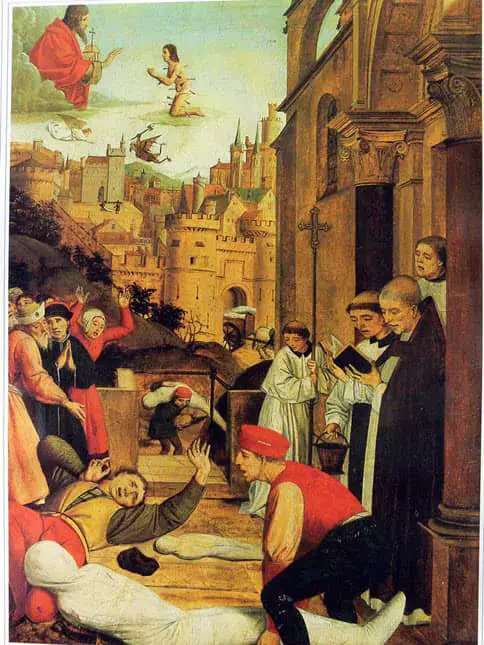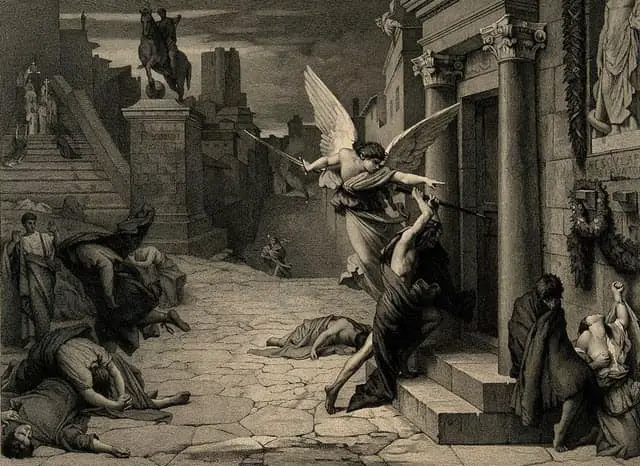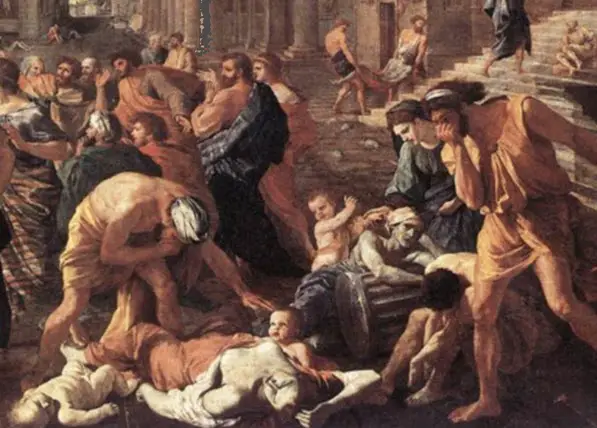The epidemic of diseases in the Ancient Roman Empire has reshaped the Roman society and the whole empire in profound wards.
Numerous chaotic situations had been brought in due to the epidemics, from the death of millions of people to the downfall of the Empire itself.
The economic, agricultural, industrial, and human sectors have been affected due to the common yet vicious epidemic diseases.
Most diseases still exist in the modern-day world, but a few have been given new names and listed under different categories.
For instance, smallpox was initially known as Variola – a Latin word meaning spotted and Morbus Gallicus is now known as Syphilis.
However, the epidemics also helped flourish the Empire, as to get cured of the diseases, numerous inventions had to be done.
Surgeries, maintenance of hygiene, drinking of hygienic water, and health awareness were established.
This article talks about Ancient Rome’s most common yet dangerous epidemics of Ancient Rome that left a massive effect on the Roman Empire.
Malaria
Content

Source: Wikimedia Common
Malaria was one of the most common diseases of ancient Rome that caused severe chaos in different cities of ancient Rome.
The primary cause of this was the mosquito-breeding marshes that surrounded the Roman cities and deforestation.
The existence of the disease was first discovered from the malarial DNA found from one of the Roman sites.
The DNA was taken from the bodies found during the excavation done in 450 in one of the villages of ancient Rome. The evidence showed that Malaria had affected a considerable Romans number of children and other aged-group people.
However, in the initial phase of the epidemic, thought the symptoms and death were caused due to some supernatural powers.
The people affected with Malaria suffered from vomiting, diarrhea, headaches, a high temperature, muscle pains, and felt shivery.
Unfortunately, the epidemic caused the decline of the Roman Empire and the surrender of Attila the Hun. It became problematic until the 20th Century.
Cancer

Source: Wikimedia Common
Though Cancer took hundreds of lives in ancient Rome, it was first identified by the Greeks. The evidence of the cancer was discovered by the Greeks in the fossil from the existence of the early humans, mostly in ancient Greece and ancient Egypt.
According to the Greeks, Cancer was caused due to an excess of black bile. However, according to the Roman physician Galen, Cancer in ancient Rome appeared during 200 AD.
Romans applied numerous remedies that were first used by the Greeks to cure Cancer. Eventually, they found out that cancer in the breast could be cured or at least minimized by a mastectomy.
Likewise, they also found out that cancer in the uterus could be cured by breaking a stone in water, pouring it into the vagina, and making the patient sit on something burning hot.
Smallpox

Source: Wikimedia Common
The most common epidemic disease was smallpox ( Variola) that affected almost every citizen of ancient Rome. This disease would reoccur multiple times and be problematic every time.
Even the wealthiest person could not escape it despite several attempts to be safe and maintaining hygiene. The smallpox epidemic began from the eastern part, and the people affected by the virus would only show symptoms after two to three weeks of being affected by it.
However, the disease took its hype in 189, causing chaos by taking the lives of almost 2000 people per day. The most affected were the army, Roman soldiers, and Roman Gladiators.
Plague of Justinian

Source: Wikimedia Common
The plague of Justinian was named after the Byzantine Emperor, Justinian as he was infected by it in 542 AD. The disease broke out between 541 and 549 AD and took the lives of over one-fifth of the total population of Imperial Rome.
It was initially originated from mountain ranges on the borders of China, Kazakhstan, and Kyrgyzstan from its variant Yersinia pestis. The outbreak of this disease was transferred from the infected rats on grain ships that came to Rome from Egypt.
The bacteria causing this disease and the black death were the same and also the consequences of both the plagues were the same. People infected with this suffered from fever, gangrene, chills, headaches, abdominal pain, and swollen lymph nodes.
The Antonine Plague

Source: Wikimedia Common
The Antonine Plague was one of the deadliest plagues of ancient Rome, as people once infected by this could never be immune.
It was brought into the cities of Rome by the soldiers who returned from their campaign in Western Asia. They got in contact with the bacteria in the Tigris River during the siege of Seleucia.
The people infected with this would suffer from skin sores, diarrhea, sore throats, and irritation in the body internally and externally. They would suffer for over two weeks and die ultimately.
Apart from Rome, this plague also hit hard the cities of ancient Egypt, causing a loss in population and degrading the economic structure. During its time of over ten years, from 165 t0 180, the plague took the lives of over 15 percent of the Roman population.
The Plague of Cyprian

Source: Wikimedia Common
The Plague of Cyprian is the second dangerous plague of ancient Rome. It affected almost the whole of the population of all cities of Rome, which lasted from 249 to 262 AD taking 5000 lives in a day.
The plague was named after Saint Cyprian, a bishop of Carthage, for witnessing and describing the plague for the first time.
The major cause of this plague was the outflow of smallpox, viral hemorrhagic, fever, and pandemic influenza.
The plague caused the degradation in economic, technical, manpower shortage, food production shortage, and human sectors and also led to the beginning of the Crisis of the Third Century.
The symptoms of this plague were similar to the Plague of Antonine where people suffered from dysentery, diarrhea, loss of motor skills, and fever.
Morbus Gallicus

Source: Wikimedia Common
Morbus Gallicus was a blood-borne disease which is now known as Syphilis and the French Disease.
The name Syphilis was given during the 15th Century by an Italian Poet Girolamo Fracastoro. He was famous after composing a poem about a boy named Syphilus who suffered from Morbus Gallicus. Syphilus had insulted Apollo and in return was cursed with this disease.
The disease that was primary discovered in Rome was later found in Europe and other parts of the world. The people infected with Morbus suffered from rashes in their bodies, fever, swollen lymph glands, patchy hair loss, weight loss, headaches, muscle pain, and fatigue.
The rashes would be mostly red or in brown color but did not itch. Both the men and women would suffer from this but with a few differences in symptoms.
The main treatment around the 16th Century was using mercury skin inunctions or ointments, holy wood, or guaiacum. People also took sweat baths as the saliva and sweating would eliminate the poison of the disease
Brucellosis

Source: Wikimedia Common
The existence of Brucellosis disease in ancient Rome was proved after the testing of the skeletal of two adolescent males. The skeletons were found in one of the Roman colonies in Albania, Butrint.
It was a dangerous disease that was caused by contaminated meat or dairy products. Though it started before the Roman Era, it is still affecting the present world taking the lives of almost 5 million people per year.
This was a chronic respiratory disease with symptoms of fever, malaise, fatigue, headache, pain in the muscle, and sweats. But in severe cases, it attacked the nervous system and also affected the lining of the heart.
The long-lasting symptoms of this disease included fatigue, joint pain, and fever. People get infected by inhaling or eating the bacteria from the contaminated food.
Although the transfer of this disease from one person to another was a rare case, the nursing mothers could transfer it to the babies during breastfeeding.
Conclusion
The epidemic diseases destroyed the lives of people and also Empires from the ancient days until today. The cure of these epidemics was much difficulty in the ancient days as the pieces of equipment, treatment procedures, health offices were not available as per the requirement.
However, despite all the shortages, the Romans worked towards finding home remedies and also invented surgical tools and other treatment methods to find a better option to fight against the epidemic disease.
